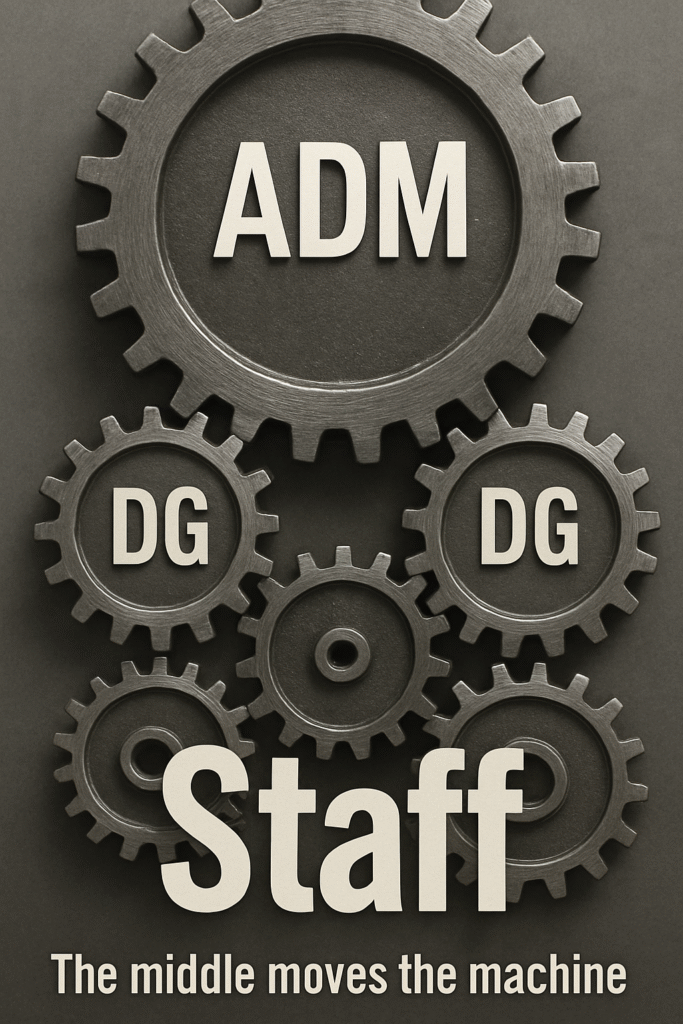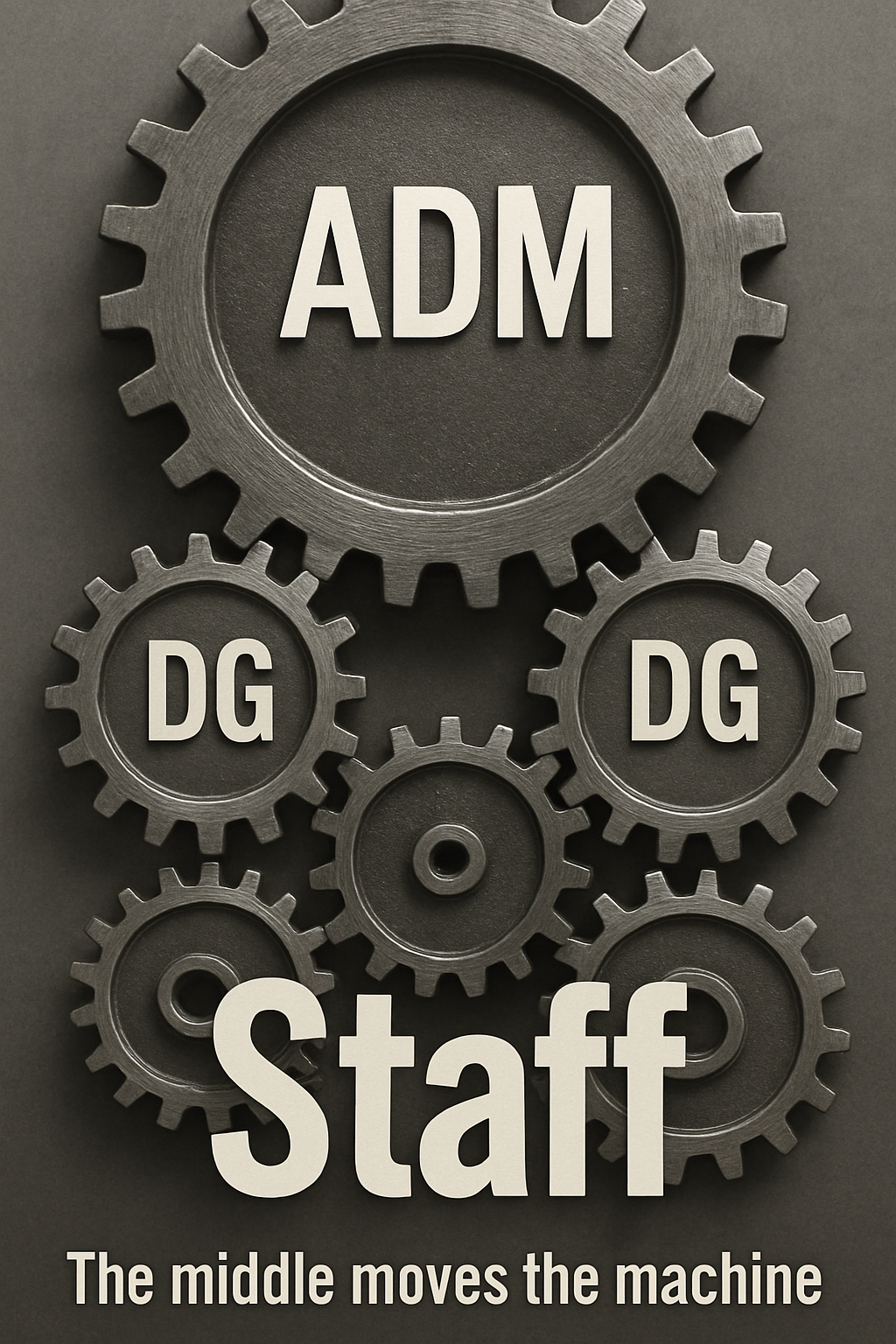Directors General (DGs) hold the pivotal middle ground of the federal public service. You are close enough to operations to know the realities, yet senior enough to influence strategy. In many transformations, the success or failure of implementation comes down to how DGs interpret their role: are you merely an advisor, or are you a decision-maker?

The Comfort of Staying in the Advisory Role
It is tempting for DGs to stay in advisory mode. After all, ADMs hold the formal authority, and Deputies carry the accountability to Ministers. Why not provide the best advice possible and let them decide?
The problem is that this approach creates a vacuum. In complex transformations, there are hundreds of decisions that never make it to the ADM or Deputy level. If DGs see themselves only as advisors, the vacuum grows—and with it, paralysis spreads.
Inertia is not impeded by one giant refusal to act. It is caused by thousands of small decisions that never get made, approvals that never get signed, and risks that never get taken. DGs who shy away from decision-making contribute to the very cultural drag that makes government transformation so difficult.
DGs as Domain Leaders
DGs are domain leaders. You know—or should know—your portfolio better than anyone. You understand the technical nuances, the operational risks, and the stakeholders who matter most. This expertise gives you the legitimacy to make decisions.
Too often, DGs underplay this role. They frame themselves as “waiting for direction” rather than exercising judgment within their span of control. The reality is that only your DG-level decision-making allows transformation to advance in real time. Without it, branches stall, and momentum evaporates.
The Courage to Decide Without Consensus
Consensus is important, but consensus-seeking can become a form of avoidance. In many organizations, especially in the public service, the cultural default is to avoid blame. That means leaders at every level try to spread ownership so thinly that no one can be held accountable.
DGs who lead transformation must resist this temptation. You must decide even when consensus is not total. You must act even when there is ambiguity. This does not mean ignoring stakeholders—it means recognizing that leadership is not about waiting for unanimity but about moving responsibly forward.
Cultural Intelligence at the DG Level
For DGs, cultural intelligence means understanding not just what is being said in meetings, but why. When staff nod in agreement, is it because they believe in the plan or because it is safer to nod than to raise objections? When your ADM says “we’ll revisit this later,” is it a signal of strategic timing, or a way to postpone a difficult decision?
Cultural intelligence lets you see beneath the surface, to interpret signals in the context of the bureaucracy’s ingrained habits. This awareness enables you to intervene where it matters most: not only with processes and plans, but with the very behaviours that either accelerate or stall transformation.
Independent Perspective for DGs
DGs face a particular challenge: you are both close to operations and enmeshed in the same culture you need to change. Independent perspective offers a way out of the echo chamber. It gives you a lens to identify when you are playing it too safe, when your branch is mistaking activity for progress, and when transformation requires firmer decisions than your culture prefers.
Conclusion: Decision-Making as Leadership
At the DG level, leadership is less about advising and more about deciding. It is about owning your domain, exercising judgment, and modelling the courage to act. Every decision you make moves transformation forward. Every decision you delay allows inertia to tighten its grip.
The middle of the organization is where transformation either accelerates or dies. DGs have the power to make the difference.
What’s Next?
At Institute X, we support DGs in stepping fully into their role as decision-makers, not just advisors. We provide the perspective to recognize cultural drag, the insight to cut through ambiguity, and the confidence to act decisively.
References:
- Lindquist, E. (2017). Public Sector Leadership in Canada: Challenges and Opportunities.
- OECD (2020). Leadership for a high performing civil service.

